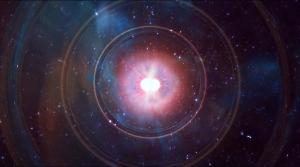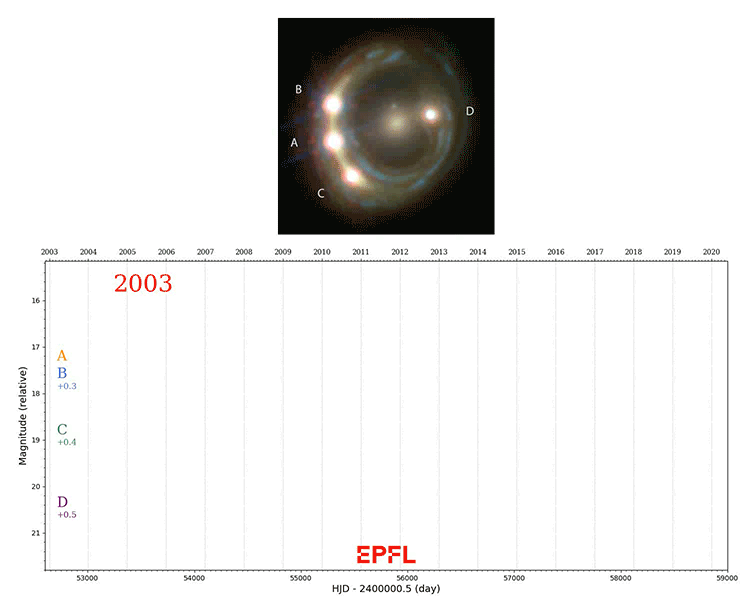Blog
Expanding Lens
23 November 2020
 NRAO/AUI/NSF
NRAO/AUI/NSFOne of the tenets of our cosmological model is that the universe is expanding. For reasons we still don’t fully understand, space itself is stretching over time. It’s a strange idea to wrap your head around, but the evidence for it is conclusive. It is not simply that galaxies appear to be moving away from us, as seen by their redshift. Distant galaxies also appear larger than they should due to cosmic expansion. They are also distributed in superclusters separated by large voids. Then there is the cosmic microwave background, where even its small fluctuations in temperature confirm cosmic expansion.
We know the universe is expanding, but as we’ve gathered more data it’s clear we don’t know how fast it’s expanding. We know the rate is about 70 (km/s)/Mpc, but we’re having difficulty pinning it down more precisely. The reason for this is that when we measure the rate in different ways the results don’t match up.
 Martin Millon/Swiss Federal Institute of Technology Lausanne
Martin Millon/Swiss Federal Institute of Technology LausanneYou’re probably familiar with the method of using supernovae to measure the distance of remote galaxies. By comparing this measurement with the redshift of the galaxies, we can measure cosmic expansion. It’s this method that first confirmed cosmic expansion. Another method is to look at fluctuations in the cosmic background. You can also look at the gravitational waves created when two neutron stars merge, or even look at the microwave laser light coming from material near a black hole.
Each method relies upon different physical models, which means they are independent measurements of cosmic expansion. If our understanding of the cosmos is correct, the expansion rate each method measures should be the same. But it turns out they slightly disagree. Not by much, but enough to make it clear there’s something about cosmic expansion we don’t fully understand.
The answer is likely buried within the complexity of our methods. The supernova method, for example, relies on a hierarchy of measurements known as the cosmic distance ladder. Each step in the ladder has its own methodology, and at every step, errors could add up. One solution to this problem is to look for a method that doesn’t rely on so many assumptions. Recently a team of astronomers has placed their hopes in the gravitational lensing of distant quasars.1
 M. Millon and F. Courbin
M. Millon and F. CourbinThe team is using a method time-delay cosmography. Imagine there is a distant quasar with a galaxy between it and us. Light from the quasar is gravitationally deflected, or lensed, by the mass of the galaxy. This can create multiple images of the quasar, so it looks like the galaxy is surrounded by several quasar images. Because of the lensing, the distance light travels to create each image is slightly different. Since the speed of light is constant, that means the light of each image reaches us at a slightly different time. So, when the quasar has a little flicker of brightness, we will see each image flicker at a slightly different time.
Time-delay cosmography uses the time differences to measure the actual distance between quasar images. By comparing this to the apparent size of the images, the team can determine the rate of cosmic expansion. The advantage of this method is that it doesn’t depend upon a cosmic distance ladder. It only depends upon the behavior of light in curves space as described by general relativity.
In this latest work, the team obtained a value of 64.2 - 71.5 (km/s)/Mpc. While this isn’t accurate enough to solve the mystery of cosmic expansion, it shows that the method can work. With more observations of lensed quasars, the method could become good enough to give us an accurate measure. So it seems solving this problem could only be a matter of time.
Birrer, S., et al. “TDCOSMO IV: Hierarchical time-delay cosmography–joint inference of the Hubble constant and galaxy density profiles.” Astronomy & Astrophysics 643.A165 (2020): 40 ↩︎